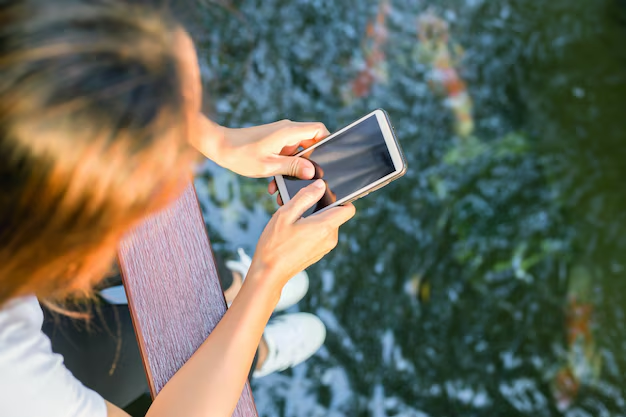Effortless Transfers: How to Move Your Phone Pictures to Your Computer
In today's digital age, capturing life’s moments is just a tap away, thanks to smartphones. But what happens when your phone memory starts to gasp for breath, or you simply want to secure your memories elsewhere? Transferring photos from your phone to your computer can seem daunting, but it doesn’t have to be complicated. This article breaks down several simple methods with step-by-step guidance. Whether you’re using iOS, Android, Windows, or Mac, you’ll find a method that suits your needs.
📲 From Your Smartphone to PC: Wired Connections
One of the most straightforward methods to transfer photos is through a direct wired connection. Though seemingly old school, it’s reliable and fast.
Android to Windows
Connect Your Devices
- Plug your Android phone into your computer using a USB cable.
Set the Connection Mode
- A prompt will appear on your phone; select “Transfer files” or “MTP” mode.
Navigate and Transfer
- Open “File Explorer” on your PC.
- Find your device under “This PC” or “Devices and drives.”
- Navigate to your photo folder — usually under “DCIM.”
- Drag and drop the photos you want to your PC.
iPhone to Windows
Connect with a Cable
- Use your Lightning cable to connect the iPhone to your PC.
Trust the Computer
- When prompted, tap "Trust" on your iPhone to allow access.
Transfer Photos
- On your Windows PC, click on the iPhone device in “File Explorer.”
- Navigate to “Internal Storage > DCIM” to find your photos.
- Copy photos to your desired location on the computer.
When Wired Isn’t an Option
Discovering your trusty cable has vanished could send you into a panic. Fear not—wireless options abound.
📶 Wireless Transfers: Untethered Freedom
Wireless transfers free you from cables, offering the flexibility to move files across devices using home or office networks.
Using Cloud Services
Apple iCloud for iOS
- Setup: Ensure iCloud Photos is enabled on your iPhone under “Settings > [Your Name] > iCloud > Photos.”
- Sync: Ensure your iPhone is connected to Wi-Fi to sync photos to iCloud.
- Access: Log into iCloud on your PC via a web browser. Select Photos and download the ones you need.
Google Photos for Android and iOS
- Install and Setup: Download Google Photos from your app store. Enable backup and sync within the app settings.
- Upload: Connect your phone to Wi-Fi and back up your photos.
- Access on PC: Visit Google Photos online. Your uploads are ready to download onto your computer.
Direct Wireless Transfers
Bluetooth
Although typically slower, Bluetooth provides a wireless method without internet reliance. Make sure Bluetooth is enabled on both devices, then pair your phone with the computer through device settings before sending photos.
Wi-Fi Transfer Apps
There are several apps available — such as AirDroid for Android or AirDrop for iOS (between Mac and iPhone) — designed for smooth transfers over shared Wi-Fi networks.
🚀 Handy Apps: Simplifying Transfers
For iOS Users: AirDrop to Mac
- Enable AirDrop: Turn on Bluetooth and Wi-Fi on both your iPhone and Mac.
- Select Photos: Open the Photos app and select the ones you wish to transfer.
- AirDrop: Tap the Share button and choose your Mac from the AirDrop list.
For Android Users: AirDroid
AirDroid offers a seamless wireless transfer experience, often using a web interface to manage photos.
- Install AirDroid: Get the app from the Play Store, install it, and create an account.
- Connect and Transfer: Visit web.airdroid.com on your PC and scan the QR code with your phone. Follow the interface prompts to download photos.
🌐 Using Email: The Tried and True Method
Email provides a universal method to transfer fewer photos without the need for special apps or connections:
- Compose An Email: Open your email app and attach the desired photos.
- Email to Yourself: Send these attachments to your email address.
- Download on PC: Access the email on a computer to download attachments.
🤔 Considerations When Transferring Photos
While transferring photos between devices, keeping certain considerations in mind helps optimize your experience and ensure your data remains secured:
Storage Capacity
Ensure your target device has enough space to store all your transferred photos. Running out of memory midway can disrupt the process.
File Format Compatibility
Different systems may handle file formats differently. Generally, JPEG and PNG are universally accepted, but RAW formats might require special software.
Maintaining Photo Quality
Wireless transfers or cloud syncs should ideally maintain the original quality of images. Check settings to ensure high-resolution photos are not automatically compressed.

📌 Summary of Tips for Photo Transfers
- Use a cable for faster transfer speeds 📈
- Opt for cloud services for seamless access across devices ☁️
- Enable Bluetooth or Wi-Fi apps for quick local transfers 🔄
- Email small batches when simplicity wins the day ✉️
- Check storage and file formats to avoid issues 📂
🔑 Key Takeaways
Choose the method that best suits your convenience, whether you're prioritizing speed, ease of use, or data integrity. Knowing multiple options equips you for any situation—from juggling cables to embracing cloud solutions. Regardless of your choice, these steps make preserving and sharing memories as effortless as snapping a photo.

Related Topics
- How Can I Transfer Contacts To My New Phone
- How Can I Transfer Music From My Ipod To Computer
- How Can I Transfer My Contacts To Another Phone
- How Can I Transfer Photos From Camera To Computer
- How Can You Transfer Text Messages To a New Phone
- How Do I Transfer Apps To My New Phone
- How Do I Transfer Contacts From One Phone To Another
- How Do I Transfer My Contacts To Another Phone
- How Do I Transfer My Contacts To My New Phone
- How Do I Transfer Phone Contacts To New Phone